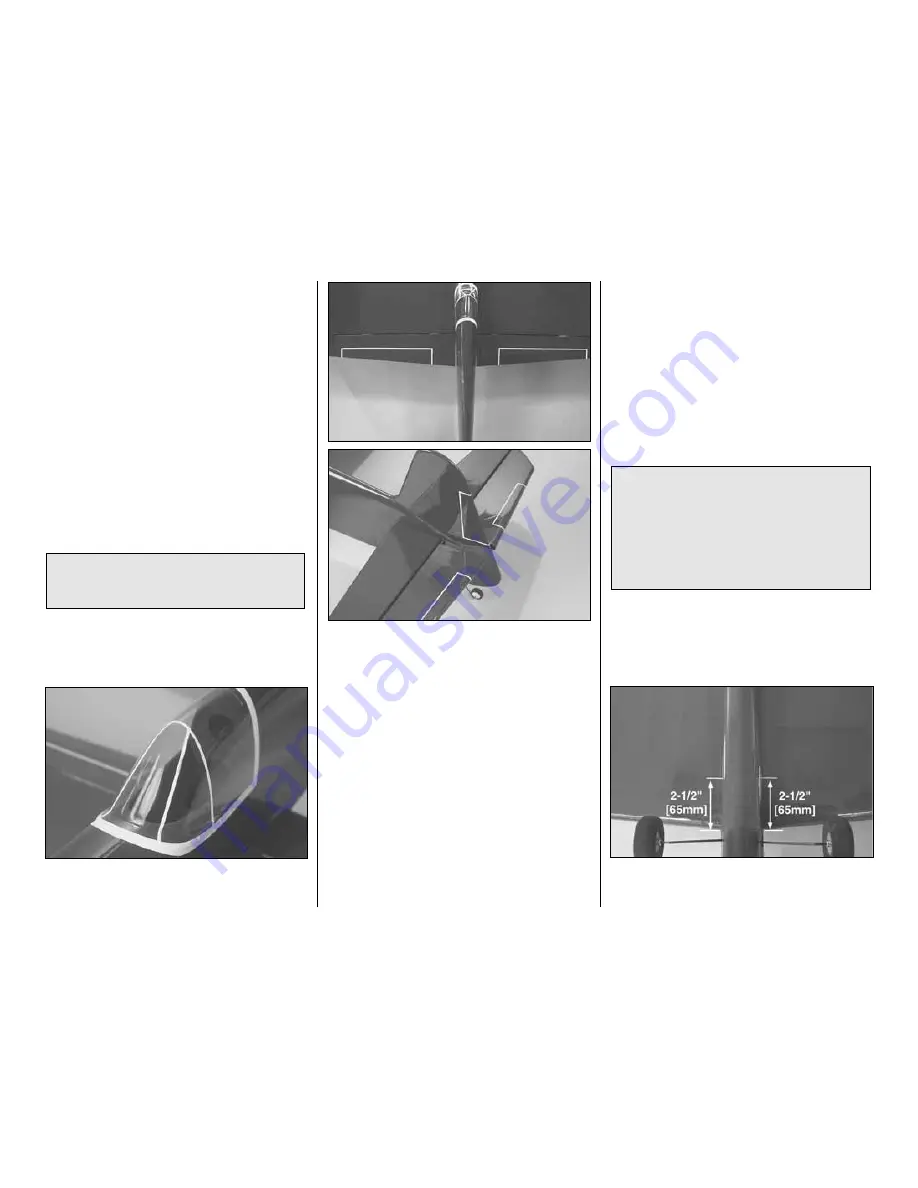
FINAL DETAILS
Mount the Canopy
❏
1. Be certain that the flaps are centered when the
elevators are centered. Also be certain that all the
pushrods are connected and that the flaps and
elevator are operating smoothly.
Make any
adjustments necessary.
❏
2. Use scissors to cut out the canopy on the
molded-in cutlines. Start by cutting approximately
1/8" [3mm] from the lines. Then, do a final cut right
on the lines.
❏
3. Mount the canopy to the fuselage with 1/4"
[6mm] white striping tape. Use 1/16" [2mm] white
striping tape to add the panel lines.
❏
4. While you’ve got the 1/16" [2mm] striping tape
out, add the flap, elevator and rudder trim tab lines
as well.
Apply the Decals
1. Use scissors or a sharp hobby knife to cut the
decals from the decal sheet. Where possible, round
the corners so they are less likely to peel up during
cleaning and handling.
2. Be certain the model is clean. Prepare a dishpan
or small bucket with a mixture of liquid dish soap and
warm water–about 1/2 teaspoon of soap per gallon
of water. Submerse one of the decals in the solution
and peel off the paper backing. Note: Even though
the decals have a “sticky-back” and are not the water
transfer type, submersing them in soap & water
allows accurate positioning and reduces air bubbles
underneath.
3. Position the decal on the model where desired.
Holding the decal down, use a paper towel to wipe
away most of the water.
4. Use a piece of soft balsa or something similar to
squeegee remaining water from under the decal.
Apply the rest of the decals the same way.
GET THE MODEL READY TO FLY
Balance the Model (C.G.)
At this stage the model should be completely ready-
to-fly with all of the components installed including
the engine, muffler, propeller, spinner, landing gear
and wheels.
❏
1. If using a Great Planes C.G. Machine to balance
the model, set the rulers to 2-1/2" [65mm]. If not
using a C.G. Machine, use a fine-point felt-tip pen or
More than any other factor, the C.G. (balance
point) can have the greatest effect on how a
model flies, and may determine whether or not
your first flight will be successful. If you value this
model and wish to enjoy it for many flights, DO
NOT OVERLOOK THIS IMPORTANT PROCEDURE.
A model that is not properly balanced will be
unstable and possibly unflyable.
Do not permanently mount the canopy. If
adjustments are ever required to the pushrods,
the canopy may be removed to do so.
- 17 -








































